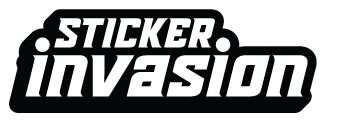File Format and Resolution Guidelines:
Preferred File Format:
We highly recommend providing your artwork in vector format. Vector files ensure the highest quality and flexibility for printing. If you're unsure, a vector format is typically denoted by file extensions like .ai (Adobe Illustrator), .eps (Encapsulated PostScript), or .svg (Scalable Vector Graphics).
Software Compatibility:
We use Adobe products in house and sometimes vector files created in alternate software won't render identically. If this is a concern, we recommend exporting your image at 720 DPI as a PNG. Having the native software rasterize the artwork will help prevent any software incompatibilities.
Alternative Resolution Requirement:
If vector artwork isn't available, ensure your file is at least 300 DPI (dots per inch). DPI refers to the image resolution, and a higher DPI ensures clearer and sharper prints. Files with a DPI lower than 300 may result in a blurry or pixelated print quality. We highly suggest using 720 DPI or greater if possible.
Designs Per File:
Each file submitted should contain a single sticker design. Please do not submit files that contain the design for multiple stickers. The only exception to this is for sticker sheets. You may submit a multi-page PDF or AI file with each design you would like on your sheet.
Creating Your Cutline:
Custom Cutlines:
Should you prefer to create your own cutline, please provide us with an Adobe Illustrator file (.ai). This file should include your printable artwork alongside separate layers dedicated to the cutline(s). It's essential to name the layers to indicate whether they are for the through (or perf) cut or the kiss cut.
Distance Between Cutlines:
For kiss cut stickers and sticker sheets, be sure to leave at least 1/8" of clearance between all cuts, including the outside edge. Any closer than that may result in defects in the cuts.
Accuracy of Cutlines:
Environmental conditions have an effect on both the material and the equipment we use. This means cutlines will sometimes be slightly offset by up to .03". Typically this error is undetectable, but the closer the cutline is to the graphic, the more noticeable it will be. Keep this in mind when designing your cutlines. Adding bleed to your design when not using any borders is recommended.
Colors:
Pantone and Color Accuracy:
While we strive to achieve the best color accuracy we possibly can, we do not guarantee perfect Pantone color matching. Also please note that due to differences in screen calibrations, the colors printed may vary slightly from the colors on your screens.
White Ink Areas:
For stickers requiring white ink, designate these areas on a separate layer as well. Similarly, ensure to name this layer explicitly for white ink.
Embossed Areas:
For stickers requiring embossing, designate these areas on a separate layer as well. Similarly, ensure to name this layer explicitly for embossing.
Text:
Fonts and Text:
When providing us with a non-raster based image format, make sure all text objects have been converted from font based to path based (this is often referred to as outlining). Most of the time, we do not have access to the fonts used in designs and are unable to produce a high quality proof using the file provided in those cases.
Sizing Your Stickers:
Die-Cut Angles:
Die cut stickers do not do well with sharp angles and thin overhangs. It's best to smooth out sharp points. If your design requires sharp points or overhangs, we suggest going with kiss cut stickers instead. Keep in mind that sharp points and overhangs in your sticker will make it more prone to tearing while peeling it off the backing paper.
We appreciate your attention to these guidelines, as they help ensure the best possible outcome for your custom stickers. Should you have any questions or need further assistance, please don't hesitate to reach out to us.
Thank you for choosing Sticker Invasion!
WHY STICKER INVASION?
Our mission is to provide our customers with the highest quality vinyl products we can produce, shipped in a timely manner and backed up by exceptional customer service.

Copyright © Sticker Invasion

